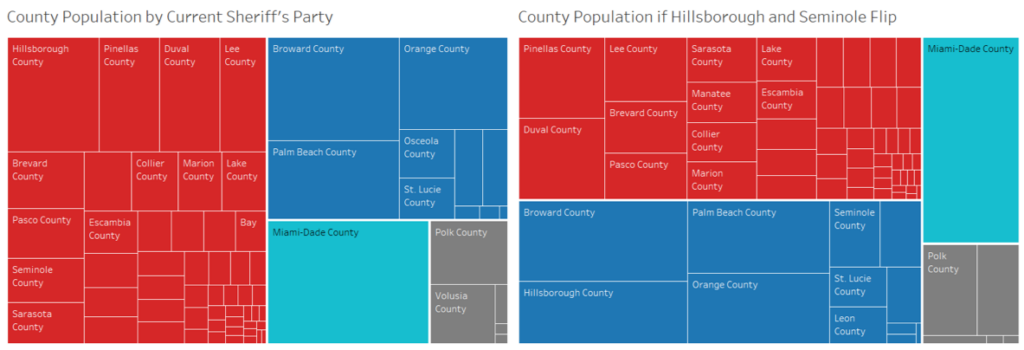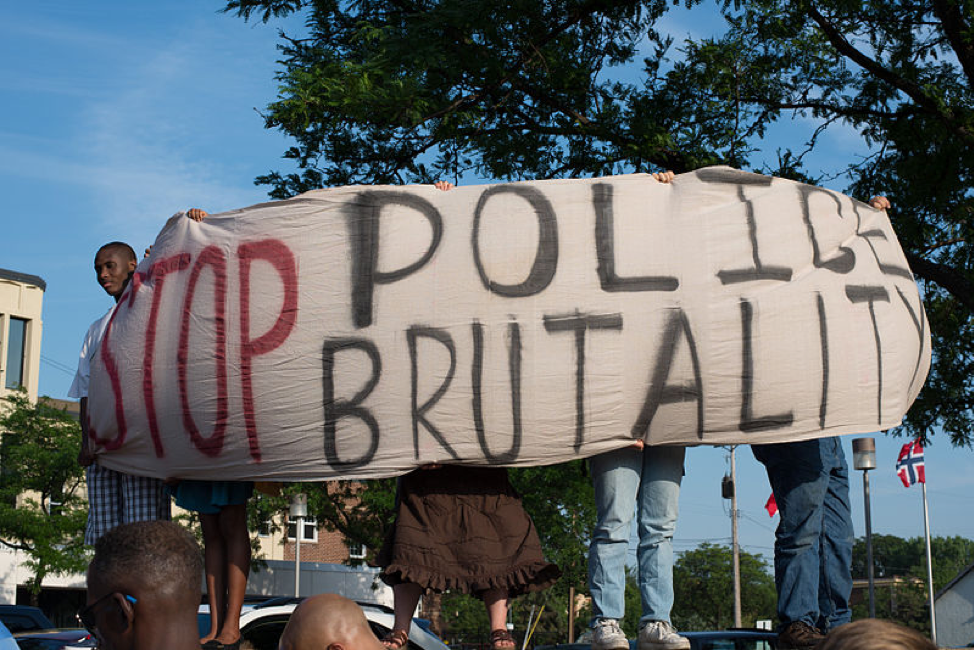Imagine this: You’re the sheriff in your county. The election is coming up and you have an opponent who keeps talking about your controversial budget decisions and the death of a veteran who was punched, tased, and blasted with pepper spray while in your custody. What do you do?
If you’re Sheriff Wayne Ivey of Brevard County, then you avoid debates and win by a landslide. Your opponent, Alton Edmond, a symbol of hope for those who think Black lives do matter, loses.
After the election on Nov. 13, one of Ivey’s deputies fatally shot two teenage boys pulling out of their driveway after they declined to get out of a car that was reportedly stolen. Black teens were shot by a white cop just a few days after the Black man who opposed the white sheriff lost.
Democrats, liberals, progressives and the like, especially in the wake of George Floyd’s death, focus on the narrative that the justice systems in our country are racist, suffocating and need to be changed. Is there any way to sell any version of this narrative to conservative electorates like Florida’s red counties? What does a blue challenger have to do to wear the sheriff’s hat? Does any of this even matter?
First, of course it matters. Would those boys still have been shot if Brevard’s sheriff was different? Impossible to tell. However, sheriffs decide policies like whether officers can fire into a vehicle if there are no shots coming from the vehicle. That’s not rare either. It’s a policy not to do so in Seminole County, which is right next to Brevard.
Sheriffs also control jails, affect department training, and direct their jurisdiction’s compliance with ICE. Specific to Florida, 48 of the 67 counties have sheriffs who have decided to comply with ICE’s Basic Ordering Agreement to detain illegal immigrant suspects for 48 hours before federal officials come down to start the deportation process.
If you’re a liberal you should want a liberal sheriff, so you need an electable blue sheriff candidate. The good news is that they definitely exist! Some even won this past November.
As nearby as South Carolina’s Charleston County, Kristin Graziano, a Democratic deputy, unseated a Republican sheriff who had held on to the star badge since Pink Floyd dropped their last album (that’s 1988, by the way). Even closer, in Georgia, three counties elected their first ever Black men into the sheriff’s seat, all of them Democrats.
Those were all blue counties, though, so I only bring them up as proof that overdue change is happening around the country for law enforcement. Demands heard at protests can be converted into consequential ballot counts, and there were notable protests in those counties.
However, for Democratic candidates unseating a Republican sheriff in a red area, let’s look at Arizona’s Maricopa County, where Sheriff Paul Penzone beat the notorious Sheriff Joe Arpaio in 2016 while the county still voted in majority for Trump. Penzone defended his badge this year with a landslide victory.
Penzone’s 2016 campaign depended on convincing enough people that Arpaio’s legal fees, publicity stunts, and extreme politicized policies had to go. It was not a radical, sensational campaign. His website emphasizes non-partisan concerns like ‘child safety.’ He still cooperates with ICE, to some outcry, but ended Maricopa’s racial profiling. The jails treat people better. He upholds laws, not politics.
Arizona journalist and political observer Elvia Diaz notes how, while other local Arizona Democrats lost, Penzone won big in 2020 by not ‘making outrageous statements.’
You may think that everybody already understands this, but it is clearly not ingrained deep into the Florida Democratic candidates or their campaign managers. Alton Edmond deleted social media posts that called violence or looting “necessary evils.” Democrats in Pinellas County ran attack ads on the sitting Republican sheriff that were so heinous their own candidates denounced them. Then the election was a landslide with 63% voting to keep the Republican incumbent.
What does a blue candidate have to do to win a sheriff badge? They have to emphasize their opponent’s scandals and bad press. They have to seem like a sober, guiding force. They have to get outside support from their party and volunteers. They need their candidate to be a tenacious local with name recognition (Penzone had run and lost against Arpaio before his 2016 victory).
For Florida, it is just not feasible to fight for policies from very progressive corners of the country in counties where a Republican won by high double-digit margins in 2020. Besides, many of the smaller Florida counties have elections decided by personalities or old boy networks. This is like how Liberty County just got their first Republican sheriff in 2020, which is not because the few thousand folks there just decided to become red, but because they still held on to the legacy of the Dixiecrats: blue conservatives.
I bring that up to show how national politics and crises are tending to affect all local races more. The Democrats on TV stink so bad as they cost a conservative blue sheriff in Liberty his star badge.
Liberals who want justice and law enforcement in Florida to align with their ethical values need to play the electorate. They need to pick their battles. They need a sober, local candidate. They need to vilify the incumbent. They need support from Democrats all around, with no strings attached to buzzwords that cause outrage. They need to keep it local. They need to win.
It is then that they can make life better for the oppressed. Not with one election all at once, but with a sympathetic sheriff and time. Maricopa County is turning blue, remember?
I envision Democrats being able to flip the sheriffs in Hillsborough and Seminole counties in 2024 if they follow these guidelines. That’s not just two counties. That’s three jails, thousands of incarcerated citizens, and nearly two million free citizens. Check my tree maps below.

Featured image: Police brutality protest after killing of Terrance Franklin. Unmodified photo taken by Fibonacci Blue used under a Creative Commons license (https://bit.ly/3oZedxe).
Check out other recent articles from the Florida Political Review here.





